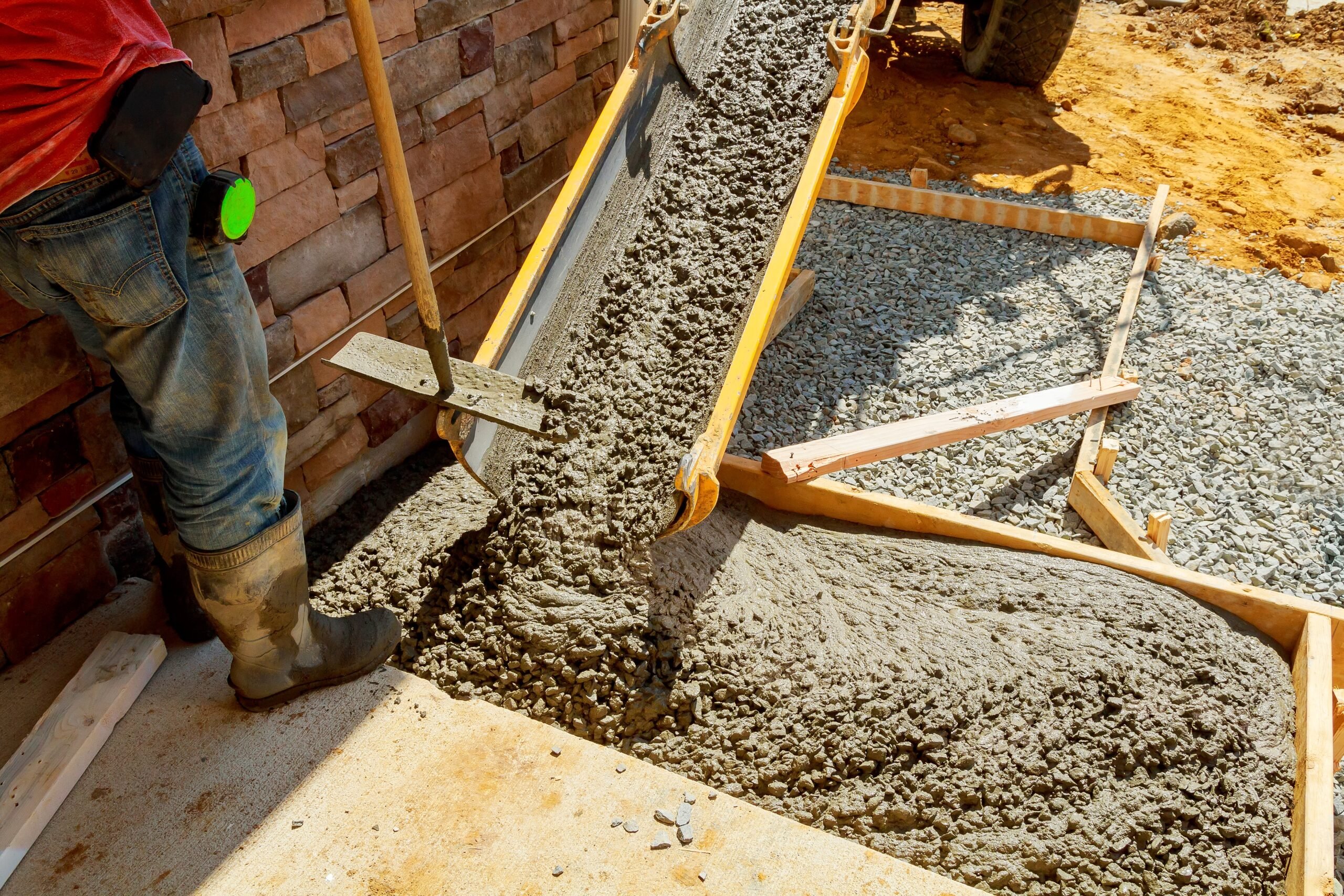01/18/2023—Second to water, concrete is the most utilized substance in the world with 4.4 billion tons used in 2021 alone1, as such the industry employs millions globally and injuries are not uncommon. In fact, this specialized subsector of the broader construction industry was found to have the second highest injury rate between 2017 and 2019 at 155.1 per 10,000 employees, with the framing subsector (292.7) at number one, and the flooring subsector at number three (148.8).2 In order to protect the concrete workforce, steadfast training, proper handling, and the added use of IoT can protect workers.
Skin irritation and burns are one of the most prevalent injuries when working with concrete. When wet concrete meets skin the drying process begins, and an employee can be left with third degree burns if proper response isn’t shown. A rinse station on any worksite is key to staving off severe burns, however preventing burns is the safest option. Ensure employees are trained to operate concrete machinery and that they practice proper form for handling concrete. Another defense is personal protective equipment (PPE), which includes coverings like gloves, eyewear, and any other pertinent PPE. With CoRe’s IoT management, admins can track individual employee training and certification, along with where and when PPE is being used on site. Customizable zones can even be created to ensure that anyone entering a specific zone has both training and attire to keep them safe.
Respiratory irritation and infections are another severe ailment that can harm workers in concrete. Silica is just one chemical present in dry concrete that is a notable irritant, but there are other chemicals as well. Even wet concrete can release harsh irritants, which is why proper ventilation and mask usage should be practiced. Masks include N-95 or similar as well as proper pouring environments, meaning avoiding enclosed spaces whenever possible. Providing breaks in open areas with fresh air is another defense against concrete-related respiratory illnesses. Ensure workers use masks with CoRe’s onsite asset tracking, which lets admins know if an employee is not using the provided respiratory PPE. Admins can also use CoRe to track how long employees have been working in a specific area, like mixing or pouring, and allow them to provide needed breaks in well-ventilated spaces.
Another common injury in concrete is falls, caught in-between or under objects, like heavy or large concrete slabs. Prevention can be done with proper onsite safety training, including signage of areas where falls or caught in/under incidents may be increased, such as when laying slabs or moving concrete. CoRe’s Personal Safety Device wearables (PSDs) are worn onsite by all employees and are equipped with SOS-button alerts, which employees can use should they suffer a fall or mishap onsite. CoRe’s PSDs are also equipped with fall detection, which will alert management if a fall occurs, even if an employee is rendered unable to do so.
Because concrete requires specialized machinery to mix and move, correct training and maintenance is vital to protect both your workforce and assets. Machine upkeep is another defense, which can prevent breakdowns and blowouts. While CoRe allows management to track employee trainings, it also provides tracking of machines and assets onsite. Using this data managers can schedule maintenance when it is recommended, to prevent breakdowns and plan for machinery downtime.
With its usage globally, it’s apparent that the concrete subsector is here to stay. Employers in this realm can feel more secure when using CoRe to track and protect their workforce and assets. With CoRe admins are given real-time views and tracking, to to provide the fastest response time when needed, and ensure that their workforce is operating under the safest conditions. Contact us today to learn more!
…
1 Garside, M. (2022, April 1). Cement production global 2021. Statista. Retrieved January 18, 2023, from https://www.statista.com/statistics/1087115/global-cement-production-volume/#:~:text=The%20total%20volume%20of%20cement,4.4%20billion%20tons%20in%202021.
2 Safety+Health. (2021, February 10). Nonfatal injury rate in construction decreases, but still outpaces all other industries. Safety+Health. Retrieved January 18, 2023, from https://www.safetyandhealthmagazine.com/articles/20817-nonfatal-injury-rate-in-construction-decreases-but-still-outpaces-all-other-industries
Person. (2020, August 7). Common concrete construction safety hazards to avoid. Construction Digital. Retrieved January 18, 2023, from https://constructiondigital.com/built-environment/common-concrete-construction-safety-hazards-avoid





